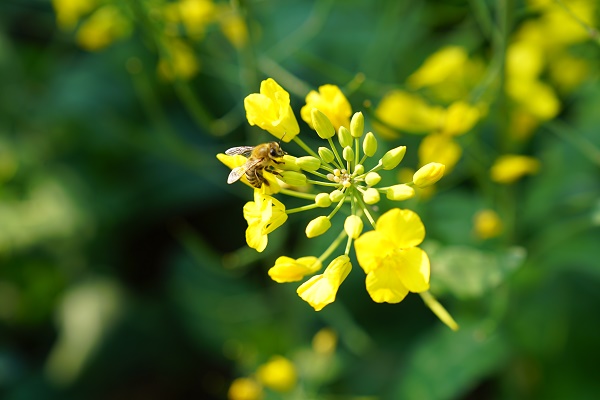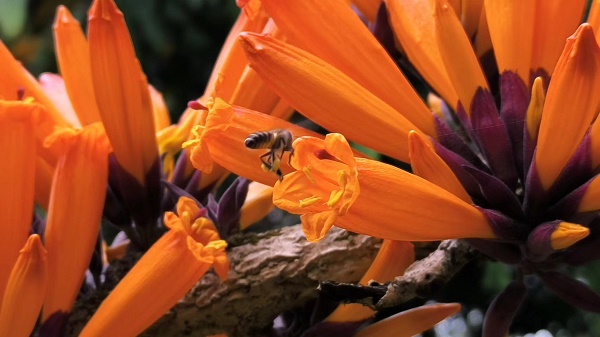
Young honey bees follow dances of older bees to improve performance
In a study published in Science, researchers from the Xishuangbanna Tropical Botanical Garden (XTBG) of the Chinese Academy of Sciences and the University of California San Diego have shown that honey bees use social signal learning to improve their ability to waggle dance.
Social learning shapes honey bee signaling, as it does communication in human infants, birds, and several other vertebrate species, according to the researchers.
Social learning occurs when one individual learns by observing or interacting with another. Eusocial insects (i.e., insects with an advanced level of social organization) use social learning, but it is unclear whether this learning shapes their communication, which can be remarkably sophisticated and cognitively complex.
Honey bees communicate the locations of resources such as food, water, tree resin (propolis) and nest sites to nestmates by performing waggle dances. Honey bee workers use social learning when following the waggle dance to learn the location and quality of resources. However, it is not known whether following the dance can improve the performance of young waggle dancers or whether the dance is completely genetically pre-programmed (innate).
As previously reported, the waggle dance is usually performed by a successful forager, i.e., one who has located a good source of pollen, nectar or water, and provides information about the presence, quality, identity, direction and distance of the source so that nestmates can find and use it.
The researchers created colonies in which they observed the first waggle dances produced by foragers that either had or had not followed other waggle dancers. Each of the five experimental colonies was established with a single cohort of one-day-old bees.
"As these bees aged, we monitored the colonies until we observed the first waggle dances and then observed the same dancers 20 days later when they had more foraging and dancing experience," said Dr. DONG Shihao, first author of the study.
They found that bees that did not have the opportunity to follow any dances before their first dance produced significantly more disordered dances with larger waggle angle divergence errors and incorrectly encoded distance.
"When the same bees were older and had experience of dance following and dancing, they significantly reduced divergence angle errors and produced more orderly dances. However, they were never able to produce normal distance encoding," said DONG.
The results suggest that social signal learning can improve waggle dancing. But why should honey bees use social learning to improve their waggle dancing?
"Learning is a useful way to refine behaviors for local conditions. We suggest that the unique topologies of each colony’s dance floor make it advantageous for novice dancers to learn from more experienced ones. Another possibility is that experienced dancers may transmit distance encodings based on local optic flow to nestmates," said TAN Ken of XTBG.

A honey bee is sucking on the flowers. (Image by DONG Shihao)

A honey bee is sucking on a flower. (Image by YANG Zhen)

86-10-68597521 (day)
86-10-68597289 (night)

52 Sanlihe Rd., Xicheng District,
Beijing, China (100864)

